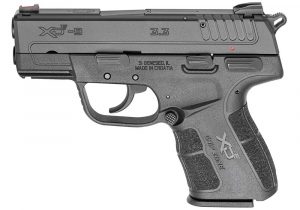Inspired by Q

Everyone is aware of James Bond and his unique weapons and gadgets provider Q, who pops up in most of the series’ movies presenting a profusion of gadgets – some of them quite surreal – to assist the hero on his endeavours. Reality imitates fiction indeed, and there are plenty of original, crafty tools that have been devised by intelligence organisations worldwide, with some of them featuring pre-eminently throughout history.
Before the digital era made communications easy and accessible anywhere, having an agent on the field was always a tricky affair, for any attempt to establish contact involved risks. It’s no surprise that significant resources were employed to minimize these risks. And although secret service agencies dedicate themselves primarily to the gathering of information, there are times when some pragmatism is required. Kidnappings, assassinations and sabotage missions have been performed (and typically denied) by agents in every conceivable circumstance, with the aid of some ingenious devices.
Dead drops
Spymasters figured noon would be interested to touch a dog turd, so a hollow tube, disguised as one, was used to convey messages without raising too many suspicions. Not the most glamorous choice, but rather effective. Cleaner options included hollow spikes set in the ground.
Double bug
An older version of a drone, a fly-sized flying device equipped with a microphone and capable of flying inconspicuously close to the target was devised as early as the 1960s.
Matchbox camera
Ludicrous by today’s technology standards, in the troubled times of cold war this kind of cameras, secretly made for covert operation agencies, were intensely used to surreptitiously photograph documents, locations or persons. The resulting microfilm could easily be hidden and passed on to headquarters.
Transmitter shoe
Maxwell Smart had a phone on his shoes, but real-life agents had no such luxuries. Instead, there was a shoe model with a transmitting device installed in its heel that could pinpoint the (more or less) exact location of the operative who was wearing it.
Codes
If the message happened to get intercepted, it would better not be understood. Codes are as fundamental to spies as ever, and some clever encoding devices have been created to that effect. One very discreet tool was a make-up mirror that would reveal the code when tilted in the right angle.
Concealed guns
 They would probably not pass a modern metal detector, but there was a time when weapons were shaped as smoking pipes, lipsticks or umbrellas. These objects can shoot real ammunition or poisoned darts, being deadly at short range. Many field agents were known to use them in action. Daily objects such as rings or spectacles could also have a sharp extremity tainted with poison, with a fleeting contact with the victim more than enough to cause the desired consequence.
They would probably not pass a modern metal detector, but there was a time when weapons were shaped as smoking pipes, lipsticks or umbrellas. These objects can shoot real ammunition or poisoned darts, being deadly at short range. Many field agents were known to use them in action. Daily objects such as rings or spectacles could also have a sharp extremity tainted with poison, with a fleeting contact with the victim more than enough to cause the desired consequence.
Unsuspected bombs
Used mainly as sabotaging tools, bombs were made to look like innocuous objects like flasks, cigarette cases or make-up kits. More imaginatively, bombs were also inserted inside dead animals such as rats and birds and left nearby their targets.
